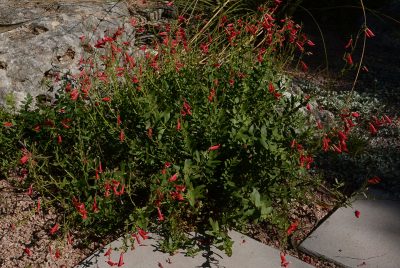Austin Garden Conservancy Tour 2017
air date: October 21, 2017
Whatever your garden goal, discover ideas on The Garden Conservancy’s 2017 Austin Open Days tour. Designer Patrick Kirwin spotlights formal and casual designs in small and large spaces for drought, flooding water, wildlife, outdoor living, herbal love, and community value that restored homeless lives to dignity. Visit a gorgeous makeover designed by landscape architect Curt Arnette and landscaper John Gibson to turn lawn into wildlife habitat and serene outdoor living. See how a viewer hand pollinates pumpkin flowers (same for squash!) to promote fruit production. Get Daphne’s tips to grow native rock penstemon, a surefire hummingbird plant. John sharpens our skills to keep tools ready for digging and pruning ahead.








